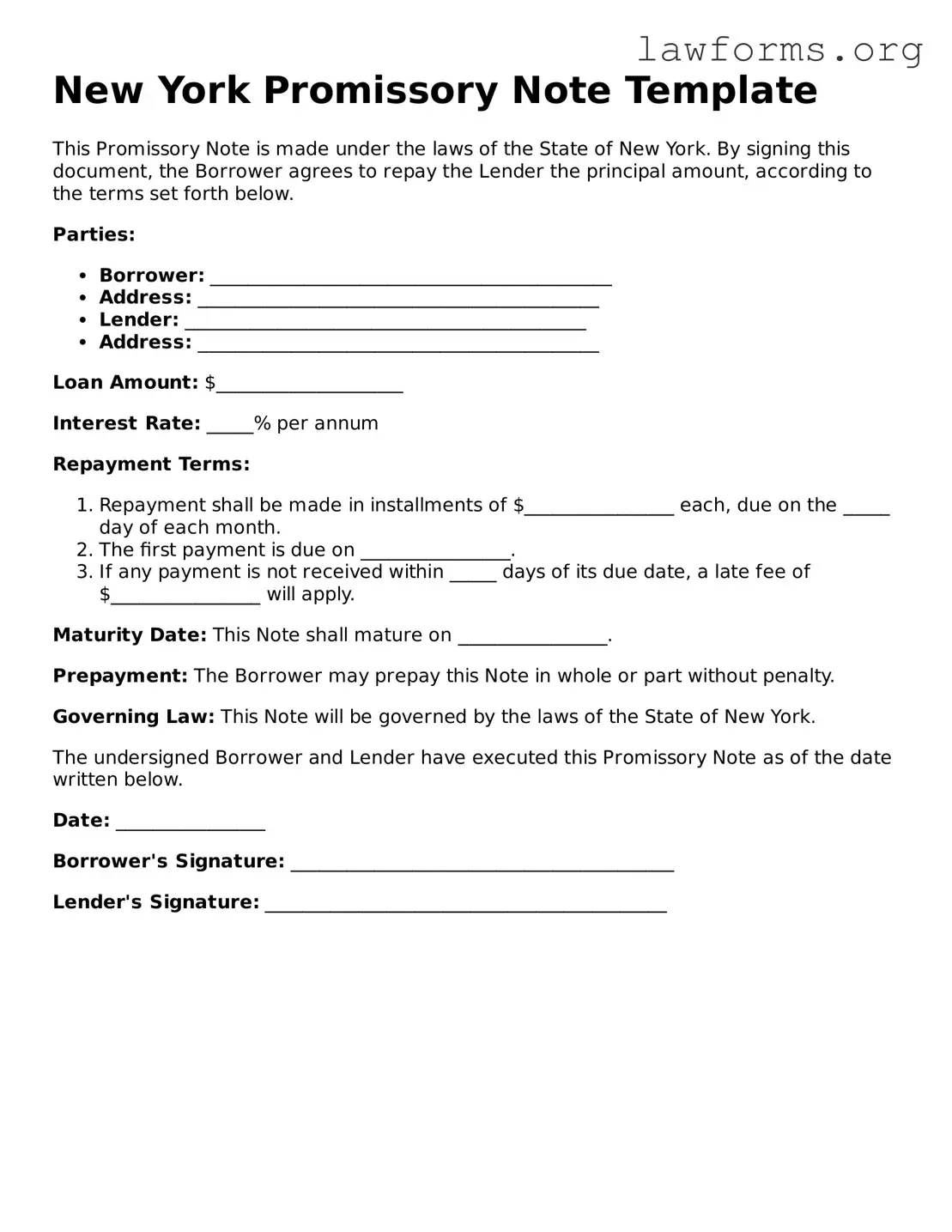New York Promissory Note Template
This Promissory Note is made under the laws of the State of New York. By signing this document, the Borrower agrees to repay the Lender the principal amount, according to the terms set forth below.
Parties:
- Borrower: ___________________________________________
- Address: ___________________________________________
- Lender: ___________________________________________
- Address: ___________________________________________
Loan Amount: $____________________
Interest Rate: _____% per annum
Repayment Terms:
- Repayment shall be made in installments of $________________ each, due on the _____ day of each month.
- The first payment is due on ________________.
- If any payment is not received within _____ days of its due date, a late fee of $________________ will apply.
Maturity Date: This Note shall mature on ________________.
Prepayment: The Borrower may prepay this Note in whole or part without penalty.
Governing Law: This Note will be governed by the laws of the State of New York.
The undersigned Borrower and Lender have executed this Promissory Note as of the date written below.
Date: ________________
Borrower's Signature: _________________________________________
Lender's Signature: ___________________________________________
